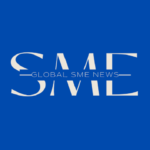The wearable technology market is set for exponential growth, with projections indicating a compound annual growth rate (CAGR) of 12.8% from 2022 to 2031, according to a recent report by Allied Market Research. The market, valued at $62.5 billion in 2023, is expected to reach $198.8 billion by 2032, reflecting an expanding consumer demand for health monitoring, fitness tracking, and hands-free connectivity.
For small and medium enterprises (SMEs), this signals significant business opportunities in hardware development, AI-driven software solutions, and niche applications tailored to healthcare, sports, wellness, and industrial use cases.
SMEs in the Wearable Tech Supply Chain
While large corporations such as Apple, Samsung, Fitbit (Google), and Garmin dominate the market, SMEs and startups are playing a crucial role in developing specialized applications, sensors, and AI-based wearable solutions.
Key areas where SMEs can capitalize include:
- B2B Wearable Solutions: Smart wearables tailored for corporate wellness programs, worker safety gear, and industrial monitoring.
- AI-Enabled Health & Medical Devices: Startups integrating AI for predictive analytics, early disease detection, and personalized health monitoring.
- Niche Wearable Fashion & Accessories: Tech-integrated clothing, smart jewelry, and innovative wearable payment solutions.
- Software & App Development: Custom apps that optimize wearable user experience, fitness tracking, and mental health monitoring.
Healthcare and Industrial Wearables Driving Demand
One of the biggest growth drivers in the wearable technology industry is healthcare applications. Medical wearables are evolving beyond fitness tracking to remote patient monitoring, chronic disease management, and advanced diagnostics.
Additionally, industrial wearables—such as smart helmets, augmented reality (AR) glasses, and biometric wearables for workplace safety—are gaining traction in manufacturing, logistics, and construction.
These advancements create new market entry points for SMEs specializing in sensor technology, AI-driven analytics, and data security solutions.
Challenges for SMEs in the Wearable Tech Industry
Despite the opportunities, scaling in the wearable tech industry comes with challenges. SMEs must navigate:
- High R&D Costs: The need for continuous innovation and compliance with regulatory standards.
- Supply Chain Dependencies: Reliance on global semiconductor and battery supply chains.
- Competitive Market Dynamics: Competing with tech giants while carving out niche markets.
However, collaborations with larger firms, government-backed innovation funds, and public-private partnerships can provide SMEs with the necessary capital and technological support.
The Road Ahead for SMEs in Wearable Tech
With wearables integrating AI, IoT, and big data analytics, the future of wearable technology is not just about hardware but smart, personalized, and predictive solutions. SMEs that innovate, adapt, and create unique value propositions will find lucrative opportunities in the expanding wearable ecosystem.
For entrepreneurs and small businesses, the key to success lies in developing niche solutions, leveraging AI for smart wearables, and forming strategic partnerships with larger industry players.
As wearable technology becomes more ingrained in everyday life, the next wave of growth will likely be driven by SMEs bringing innovation to emerging markets and underserved industry segments.
Author Profile

Latest entries
 Data18 October 2025Global Study on Startups and Family Firms: Cross-Learning for Growth and Resilience
Data18 October 2025Global Study on Startups and Family Firms: Cross-Learning for Growth and Resilience AI17 October 2025Professor Nelson Granados Joins Prow™ as Chief Intelligence Officer, Strengthening AI and Academic Leadership
AI17 October 2025Professor Nelson Granados Joins Prow™ as Chief Intelligence Officer, Strengthening AI and Academic LeadershipUncategorised11 February 2025Wearable Technology Market Poised for Growth: Opportunities for SMEs in the Expanding Ecosystem
FEATURED17 January 2025Best Practices for Enhancing Workplace Safety in MSMEs: A Collaborative Approach












